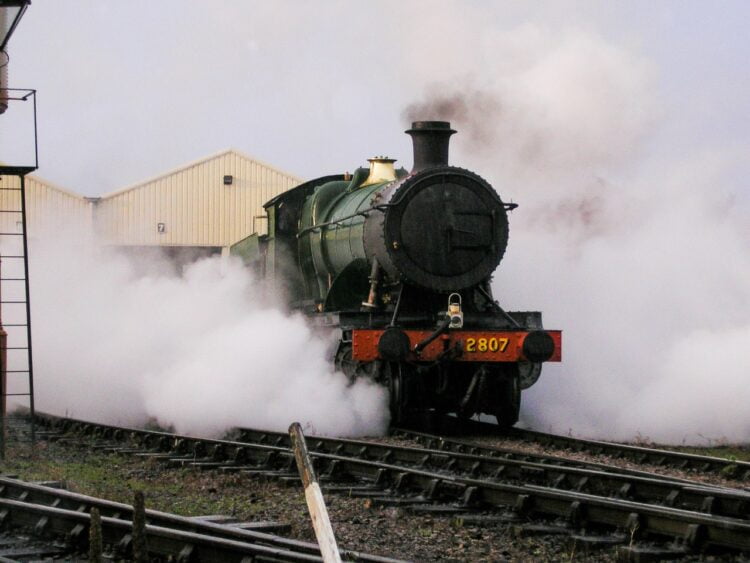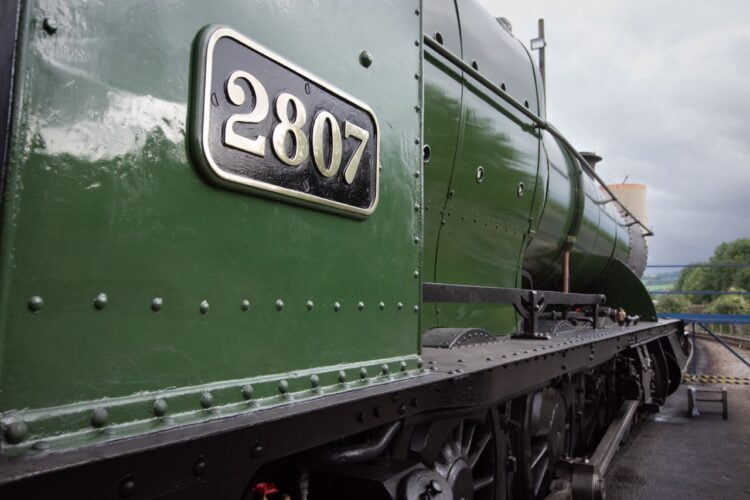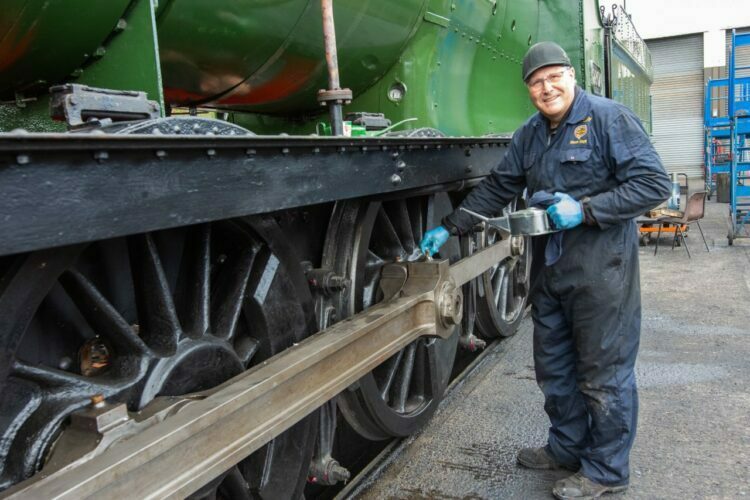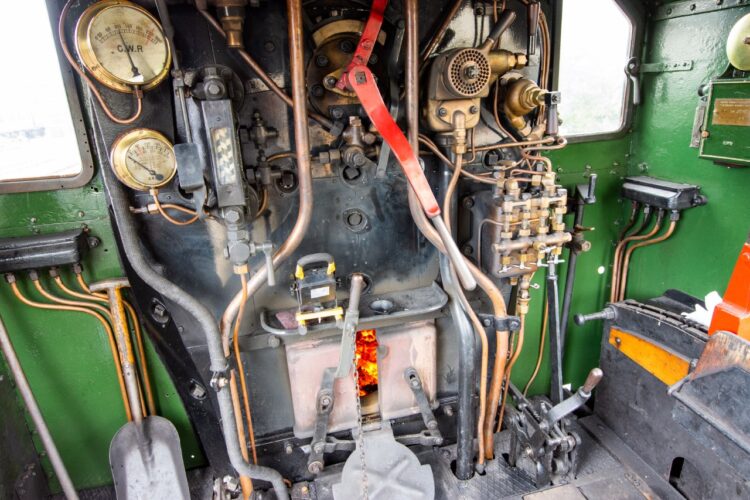Churchward 28xx class no. 2807 has moved under its own power for the first time following its overhaul, making it once again the oldest working Great Western Railway locomotive.
2807 returned to action running a few miles up and down the yard in the rain at the Gloucestershire Warwickshire Steam Railway‘s (GWSR) Toddington depot on Thursday 21 September at about 6pm.

The loco is a ‘heavyweight champion’, a heavy freight 2-8-0 owned by the Cotswold Steam Preservation Ltd (CSPL). It was built at Swindon Works, from which it emerged in 1905.
Only two other GWR locomotives are older than 2807: 4-4-0 no 3717 City of Truro (built 1903); and ‘Dean Goods’ 0-6-0 no. 2516 (of 1897). Both are at Swindon’s STEAM Museum, and neither is likely to return to operation.

GWR expects 2807 to be fully ready to perform at its ‘Autumn Showcase’ gala over the weekend of 28-29 October, although it does not plan to have the loco hauling trains, as the Railway prioritises completing the work to at the highest standard rather than rushing to meet a deadline. The gala event will see both steam and diesel locomotives working to a busy timetable, including a goods train.
2807 is a locomotive of the 2800 class designed by George Jackson Churchward for working with heavy freight. After the prototype (no. 97, later no. 2800) was completed in 1903, then extensively tested, production locomotives followed in 1905. It was the first class of 2-8-0 to work in the UK, and also the most powerful class of locomotive to run in the UK at the time.

A total of 167 were built, including C B Collett’s slightly-modified 2884 class. The locomotives proved to be robust and successful, and continued working until the early 1960s. By the time it was withdrawn in 1963 from Severn Tunnel Junction, no.2807 had travelled around 1.5 million miles.
Consigned to Barry scrapyard in South Wales, the loco was rescued by CSPL in 1981, becoming the first locomotive to arrive from Barry at the formative GWSR at Toddington.
It underwent a lengthy overhaul, 2807 entered service in 2010, and worked for ten years, covering around forty-two thousand miles before being withdrawn in January 2020 for its ten-year overhaul, which has been carried out over the three years since. Its boiler was overhauled by Riley & Son (E) Ltd engineers in Heywood, Bolton and the mechanical overhaul was completed by volunteers at Toddington.

Brian Gamlin, Chairman of CSPL, explained, “It was a very exciting moment for the restoration team who witnessed the fruits of their dedicated labour over the past three years.
“There remain outstanding tasks as well as the inevitable ‘snags’ to be fettled, that showed themselves as the engine gently moved up and down the sidings. But there is actually remarkably little to do and we are now setting about finishing off the job list so 2807 can be returned to traffic on the GWSR. The day was an outstanding success.
“The next milestones will be further movements within the yard followed by a full day’s light engine running. There will then be a loaded test run before 2807 can reliably re-enter service.”
He added: “There was of course that moment the team held their breath when steam issued from the cylinder drain cocks as the regulator was opened, watching for the first movement – which generated a huge cheer!”






Responses
Great to see a 2-8-0 return to service. They are a mighty loco, one of my GWR favorites. Well done to all.
Fantastic work to all the Volunteers that made this happen. Enjoy your Mega Pints everyone, you’ve earned them. Keep up the good work.
Excellent work.